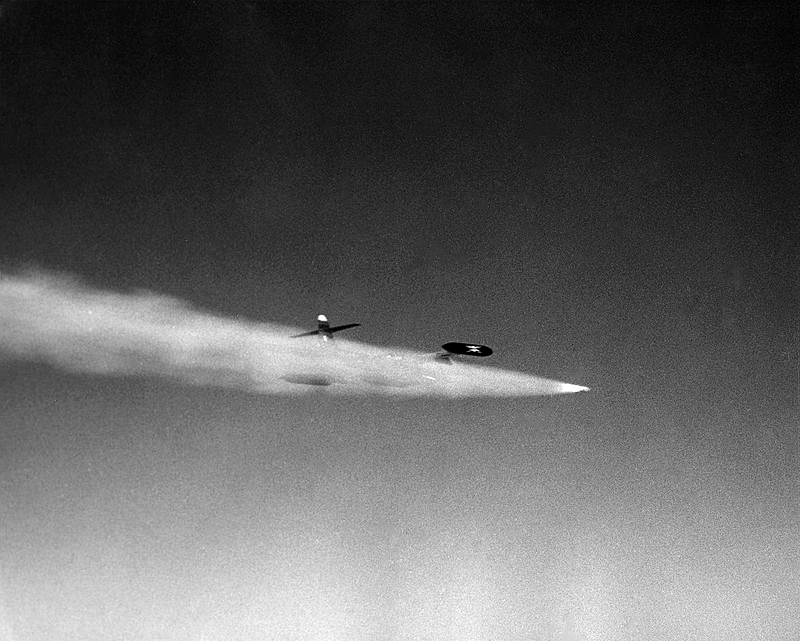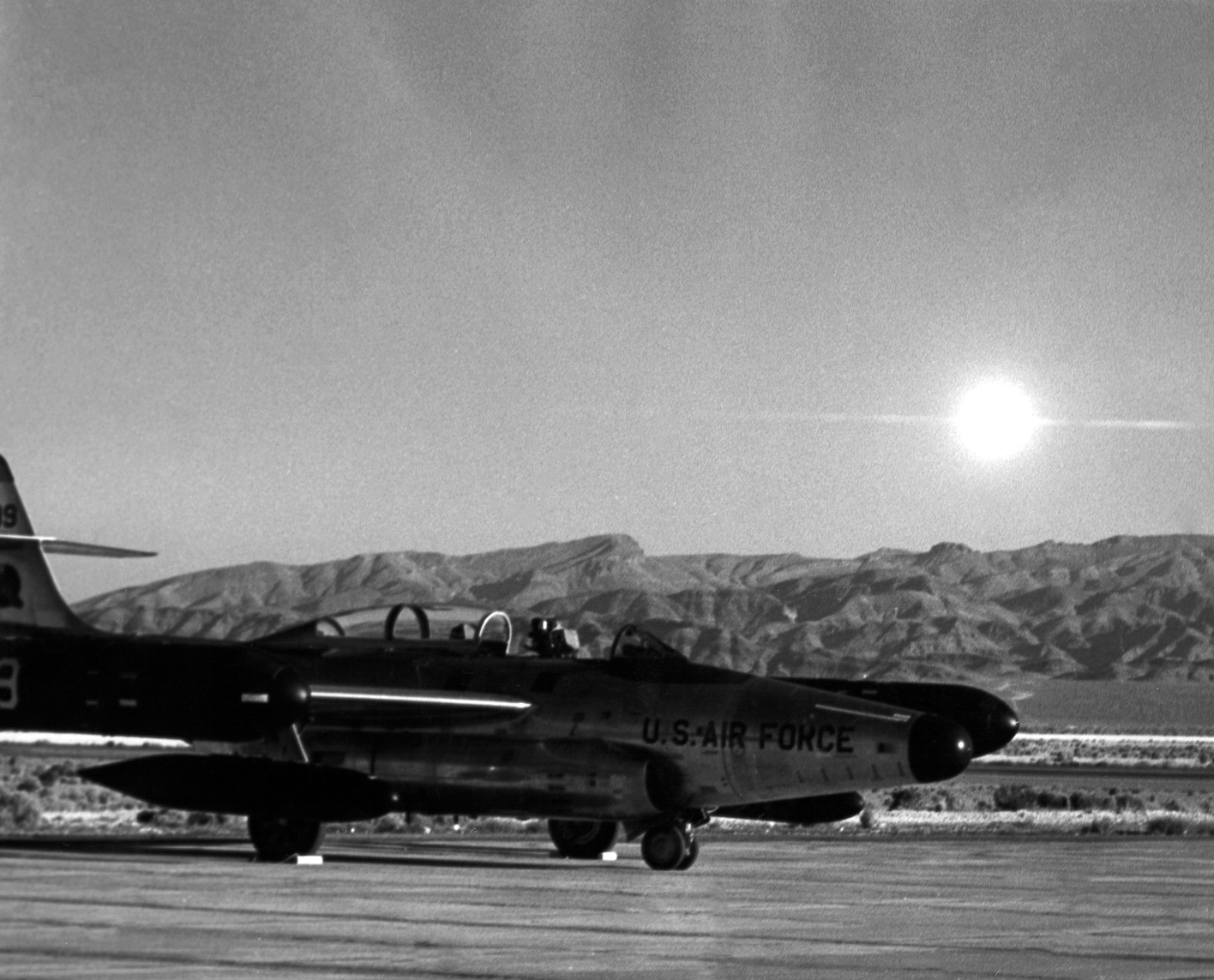An air-to-air right side view of an F-106 Delta Dart aircraft after firing an ATR-2A missile over a range. An auxiliary fuel
tank is on each wing. The aircraft is assigned to the 194th Fighter Interceptor Squadron, California Air National Guard.
(U.S. Air Force Photograph/Released)
Pictured above is an F-106 of the California Air National Guard as it deploys an inert version of the infamous Genie. The
AIR-2 Genie was an unguided air-to-air missile that really didn't need any guidance as long as it was fired in the proper
general direction of oncoming formations of aircraft.
Why's that?
Well, because it carried a 1.5 kiloton nuclear warhead with a lethal range of over 1000 feet; absolutely devastating to tight
formations of bombers and escort fighters flying in from the Soviet Union. The shockwave of the blast would be able to rattle
aircraft flying outside of the lethal radius significantly, possibly punching them out of the sky as well. The best part about
the Genie was that it was virtually harmless to civilians on the ground, who might inadvertently find themselves underneath a
major air battle in the skies above. To prove this, in 1957 during the month-and-a-half long Operation Plumbbob nuclear tests,
the Air Force sent a jet up to fire a live Genie so that scientists and researchers could observe and document the effects of
the detonation.
Code-named "Shot JOHN", the unnerving task of launching the Genie was given to then-Captains Eric W. Hutchison and Alfred
Barbee, flying an F-89J Scorpion of the Montana Air National Guard over the Yucca Flats. After briefings from Air Force
officers, government officials and a set of scientists, Hutchison (pilot) and Barbee (radar operator) climbed into their jet
and took off at 0605 hrs from Indian Springs AFB (now known as Creech AFB) in Nevada and flew towards the target area where they
would release the armed AIR-2 fitted onto a hardpoint underneath their Scorpion. Just in case something went wrong, a backup
F-89J took off at 0620 hrs from Indian Springs as well, similarly armed with a sole Genie. As soon as they were cleared to do
so, the primary crew fired the missile and banked away with the secondary Scorpion to the left immediately afterwards and then
proceeded back to Indian Springs where both landed at 0707 and 0708 respectively. At the time of detonation, according to USAF
documentation, Hutchison and Barbee's jet was about 11,000 feet away from the epicenter of the blast.
|




